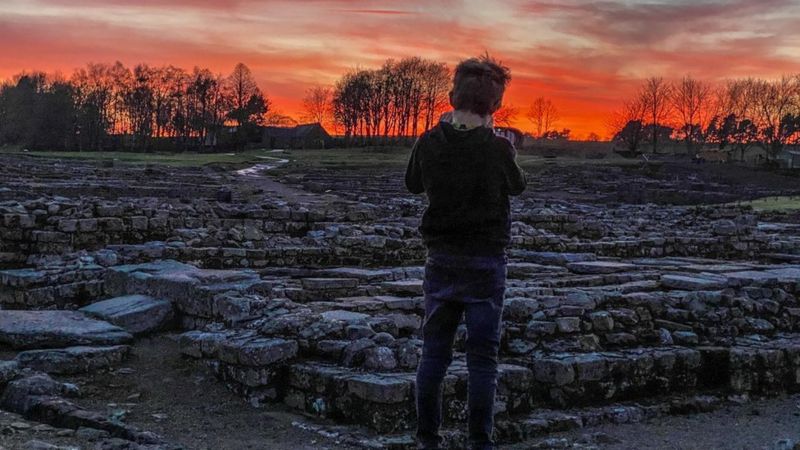👍
Christian chalice near Hadrian's Wall
Categories: Calendar , Nálezy nejenom s detektorem ve Velké Británii a Irsku

Fourteen fragments from a rare chalice have been found by archaeologists in northern England. It depicts typical Christian symbols such as ships, crosses and fish. Earlier, archaeologists in Vindolanda unearthed, for example, boxing gloves or shoes.
Fragments of a lead Christian cup were discovered by archaeologists at the Vindolanda archaeological site. The site was the site of the Roman auxiliary fortress of the same name. And it was near Hadrian's Wall in northern England, which was built a little later than the fort itself. According to current finds in the area, the Romans stayed here from about 85 to 370 AD. They finally abandoned it in the 9th century.
Archaeologists have found a total of fourteen fragments of ancient pottery hidden in the remains of the 6th century church. "This is a really exciting find from a period of British history that has clearly been misunderstood," said David Petts, a researcher working in the Department of Archaeology at Durham University.
The recovered cup depicts Christian motifs. "It clearly has a connection to early Christianity, which is really important to us in the British context. We hope that further research at the Vindolanda archaeological site will also yield further information about the development of early Christianity in the early Middle Ages," Petts believes.
Each of the chalice pieces found cover different forms of Christian iconography from the time. "Some of the symbols appear to have been etched onto the chalice after the fact. This was probably done by the same artist who took care of the overall decoration. Some of the symbols are not visible to the naked eye. We have therefore taken detailed photographs of the various parts of the cup, which we are now examining," said another professor from Durham University.
The cup features familiar symbols from the early Christian period such as ships, crosses, fish, whales, a bishop and angels.
Previously, archaeologists have found things such as boxing gloves or shoes in Vindolanda. "However, the discovery of the chalice, or parts of it, is one of the most significant. It is remarkable that parts of it have been found after such a long time," rejoices Andrew Birley, general Director of the Vindolanda Trust, which is involved in research at the archaeological site near Hadrian's Wall.
These discoveries show how valuable places like Vindolanda are. Archaeologists and historians can get a "picture" of how the inhabitants lived and managed to survive after the fall of Rome. They were united by Christianity, which was widespread.
"I am delighted that we can share information relating to this new discovery and shed light on an often overlooked period of British heritage and history," concluded Petts.



Sources: www.sci-news.com, www.bbc.com
The article is included in categories:



